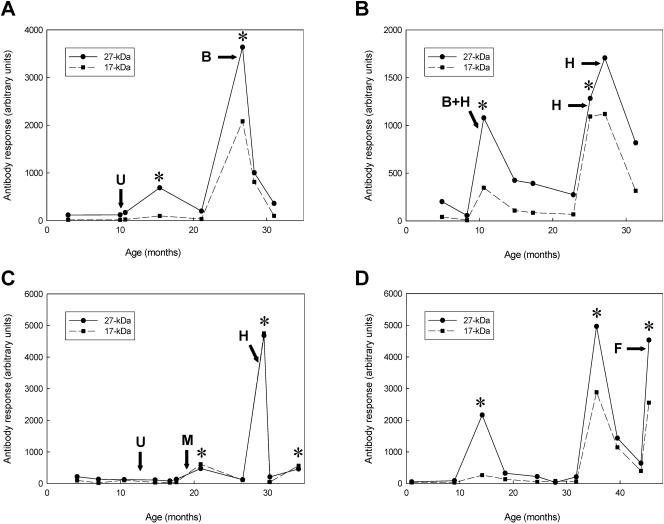FIG. 1.
Representative profiles showing the diagnosis of Cryptosporidium episodes by stool assay and by serologic antibody assay. Longitudinal serum samples from four children (A to D) were analyzed by ELISA for antibodies to the 17-kDa (dashed line with closed square) and 27-kDa (solid line with closed circle) antigens as described in Materials and Methods. Responses are presented in arbitrary units based upon a standard curve serum with a 6,400 maximum value. An asterisk indicates a serum sample that meets the definition for a positive antibody response as described in Materials and Methods. Regularly collected stool samples from the children were screened for the presence of Cryptosporidium oocysts by acid-fast microscopy, and the first day of each identified infection episode is indicated by an arrow. Microscopy-positive stool samples were subjected to PCR and RFLP analysis (46) in order to identify the genotype of Cryptosporidium parasite: C. parvum of the bovine genotype (B), C. felis (F), C. hominis or human genotype (H), and C. meleagridis (M) were detected. Stool samples that were unavailable for analysis are indicated by a U.

